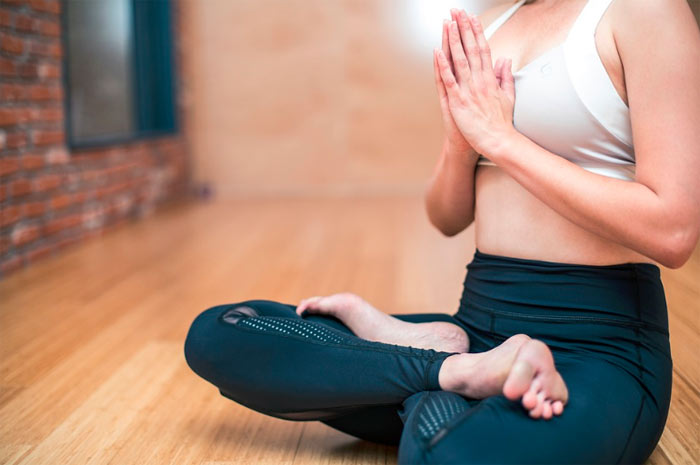According to the National Center for Complementary and Integrative Health, approximately 20 percent of American adults experienced chronic pain, and 8 percent suffered from high-impact chronic pain which limited at least one major life activity in 2016. Chronic pain goes beyond just the physiological presence of pain as after time, it starts to affect the mind, triggering changes in brain structure that have been linked to anxiety, depression and impaired cognitive function.

If you’ve experienced any type of stressful life event, even if perceived as positive, such as a move, buying a new home, taking on a new job, marriage and so on, it can increase chronic pain, making now an even better time than ever to start practicing yoga for relief.
Relaxation
Yoga helps to calm both the mind and body, and asana, which are yoga poses, are just one part of the practice. Pranayama, or breath work, can help to change one’s mood and even alleviate pain. According to Psychology Today, studies have found that adverse effects of chronic pain can be lessened or prevented by making lifestyle choices that improve the brain’s pain modulatory systems, such as yoga.
Easing Muscle Tension
As chronic pain often causes muscles to tighten and tense, practicing slow, restorative or yin yoga can help to ease it. For people with arthritis, stretching muscles and completing a full range of motion can relieve tension in their joints. Almost immediately, you’ll notice a short-term relief of muscle or joint pain that can be better managed with long-term yoga and physical therapy.
Deeper Breathing
 Yoga exercises place special emphasis on monitoring your breath. By increasing oxygen to the muscles of your body and accomplishing deeper breaths, you not only get pain relief, but better pain response.
Yoga exercises place special emphasis on monitoring your breath. By increasing oxygen to the muscles of your body and accomplishing deeper breaths, you not only get pain relief, but better pain response.
By learning to control your breath and meditating, you can also experience a sense of profound wellness. This can translate to greater psychological health that can aid partially in chronic pain management. Even just managing to cope with stress better can aid in chronic pain management and even help to cure acute pain quicker.
Mild to Moderate Exercise Decreases Pain
Mild to moderate exercise, which includes yoga, has been shown to decrease physical pain in multiple studies. One reported by Science Daily found that older adults with higher levels of physical activity experience pain modulation patterns that may reduce their risk of developing chronic pain in the first place. The researchers noted that it provided the “first objective evidence that suggested physical activity is linked to the functioning of endogenous pain modulatory systems,” at least in older adults.
The benefits of chronic pain relief from yoga practice begin in just minutes, for example, by focusing on energizing poses in the morning, poses aimed to support your digestive system at midday, and relaxing poses before bedtime. For those with chronic pain issues such as fibromyalgia, spreading a little bit of movement throughout the day can make a big difference.
Better Sleep
 Chronic pain often leads to sleeping problems which can lead to worsened pain, creating a vicious cycle. Yoga can help break that cycle so that you can enjoy better sleep by practicing relaxing poses in the evening, or quieting the mind using a practice called yoga nidra, a guided yoga/meditation that helps one ease into a good night’s rest.
Chronic pain often leads to sleeping problems which can lead to worsened pain, creating a vicious cycle. Yoga can help break that cycle so that you can enjoy better sleep by practicing relaxing poses in the evening, or quieting the mind using a practice called yoga nidra, a guided yoga/meditation that helps one ease into a good night’s rest.











